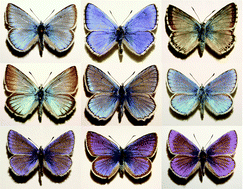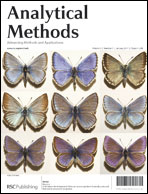Color based discrimination of chitin–air nanocomposites in butterfly scales and their role in conspecific recognition
Abstract
The self-assembled photonic nanoarchitectures occurring in the wing scales of the blue colored males of nine Lycaenid butterfly species, living in the same habitat, were investigated by reflectance measurements followed by automated data processing. The spectral signatures of the nine species analyzed using an artificial neural network software show that despite the fact that all possess similar “pepper pot” type structure, the spectral signatures exhibit enough characteristic differences to allow the unambiguous identification of conspecific individuals. By cross-correlating the position of the individuals of each species in the CIE chromaticity diagram with their flying period it was possible to show that relatively similarly looking, closely related species fly in distinct periods. The spectral identification method may prove useful in the investigation of museum exemplars which cannot be harmed. As the self-assembled, quasiordered, “pepper pot” type photonic nanoarchitectures of various colors seem to pose milder constraints on the production process as compared with perfect photonic crystals, such nanoarchitectures may find practical applications in a wide range from the textile industry to environmentally friendly colorants.


 Please wait while we load your content...
Please wait while we load your content...